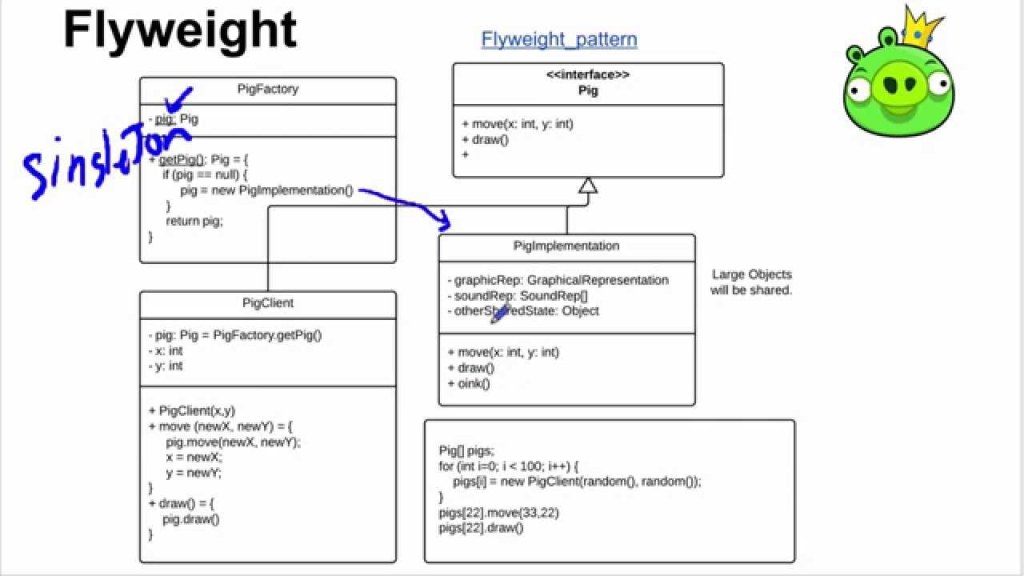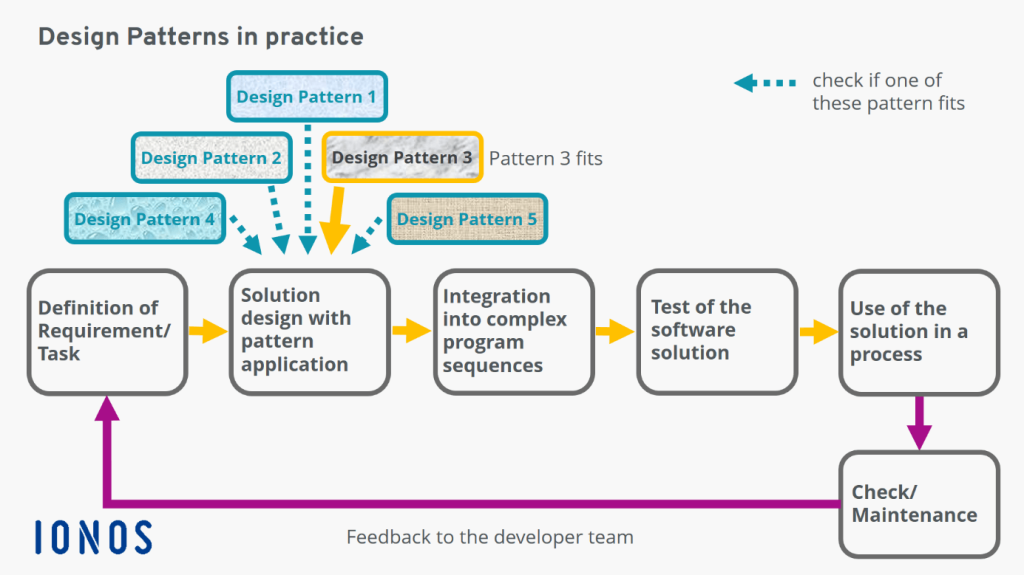Mastering Software Development Design Patterns: Unleashing Your Coding Potential
Software Development Design Patterns: Boosting Efficiency and Code Reusability
Introduction
Hello Readers,
2 Picture Gallery: Mastering Software Development Design Patterns: Unleashing Your Coding Potential


Welcome to our in-depth exploration of software development design patterns. In this article, we will dive deep into the world of design patterns, their significance in the software development process, and how they can enhance efficiency and code reusability. Whether you are a seasoned developer or just starting out, understanding and implementing design patterns can greatly impact the quality and maintainability of your codebase.
In this comprehensive guide, we will discuss various design patterns, their applications, advantages, disadvantages, and provide you with actionable insights to incorporate them into your software development projects. So, let’s get started and unravel the mysteries behind these powerful tools.
Table of Contents

Image Source: ytimg.com
Introduction
What are Software Development Design Patterns?
Types of Design Patterns
Creational Design Patterns
Structural Design Patterns
Behavioral Design Patterns
Advantages and Disadvantages of Design Patterns
FAQs
Conclusion
Final Remarks
What are Software Development Design Patterns? 🧩
Software development design patterns are proven solutions to recurring problems that developers encounter during the software development lifecycle. They provide a standardized way of designing and organizing code, ensuring that it is maintainable, scalable, and reusable. Design patterns are not specific to a programming language or framework, making them applicable across various domains and technologies.

Image Source: ionos.com
These patterns encapsulate years of collective knowledge and best practices from experienced developers and software architects. By adopting design patterns, developers can create robust, flexible, and highly maintainable software systems, even for complex projects.
Types of Design Patterns
Design patterns can be categorized into three main types:
Creational Design Patterns
Creational design patterns focus on object creation mechanisms, providing flexible ways to create objects while hiding the creation logic. Some popular creational design patterns include:
Singleton
Factory Method
Abstract Factory
Builder
Prototype
Structural Design Patterns
Structural design patterns deal with how objects are composed to form larger structures while keeping the system flexible and efficient. Some commonly used structural design patterns include:
Adapter
Decorator
Composite
Facade
Bridge
Behavioral Design Patterns
Behavioral design patterns focus on the interaction between objects, defining how they communicate and collaborate to achieve desired functionalities. Some widely used behavioral design patterns are:
Observer
Strategy
Command
Iterator
State
Advantages of Design Patterns
Design patterns offer numerous benefits for developers, including:
1. Code Reusability 🔄
By encapsulating reusable code into design patterns, developers can save time and effort by leveraging already-tested solutions for common problems. This reduces redundancy and enhances code maintainability.
2. Flexibility and Scalability 🚀
Design patterns promote loose coupling and modular design, making software systems more flexible and scalable. They allow components to evolve independently, facilitating easier updates and modifications.
3. Maintainability and Readability 🧹
Design patterns provide clear and structured solutions to common problems, making code easier to understand and maintain. They improve code readability by following established conventions and best practices.
4. Improving Collaboration and Communication 🤝
Design patterns provide a common vocabulary and framework for developers to communicate ideas and collaborate effectively. They establish well-defined structures and relationships, facilitating teamwork and reducing communication gaps.
5. Enhancing Testability and Debugging 🧪
Design patterns promote modular and organized code, making it easier to write comprehensive unit tests and identify bugs. This improves software quality and reduces the time required for debugging and troubleshooting.
Disadvantages of Design Patterns
Although design patterns offer numerous benefits, it’s important to be aware of their potential drawbacks:
1. Increased Complexity and Overengineering 🕸️
Design patterns introduce additional layers of abstraction, which can make the codebase more complex and harder to understand, especially for developers who are not familiar with the patterns being used. Overusing design patterns can lead to overengineering, where the solution becomes unnecessarily complicated for the problem at hand.
2. Learning Curve and Implementation Effort 📚
Design patterns require developers to have a solid understanding of their principles and usage. Learning and mastering design patterns can take time and effort. Implementing design patterns in existing codebases might also require significant refactoring, which can be challenging and time-consuming.
3. Potential Performance Overhead 📈
Some design patterns introduce additional layers of abstraction or indirection, which can result in a small performance overhead. While the impact is typically negligible, it’s important to consider the performance implications, especially for high-performance systems or resource-constrained environments.
4. Inappropriate Usage and Overuse 🚫
Not all problems require design patterns, and applying them where they are not necessary can lead to unnecessary complexity and reduced maintainability. It’s crucial to understand the problem context and choose the appropriate design pattern(s) accordingly.
Frequently Asked Questions (FAQs)
1. What is the difference between design patterns and design principles? ❓
Design principles are general guidelines or best practices that guide software design, while design patterns are specific solutions to recurring problems. Design principles provide high-level guidance, whereas design patterns offer detailed solutions.
2. Can design patterns be used in any programming language? ❓
Yes, design patterns can be used in any programming language as they are not tied to any specific language or framework. The concept of design patterns is independent of the language used.
3. Are design patterns applicable to all software development projects? ❓
No, not all software development projects require design patterns. Design patterns are most beneficial for complex projects or systems where code maintainability, scalability, and reusability are crucial. Smaller and simpler projects might not require the use of design patterns.
4. How can I learn and practice design patterns effectively? ❓
Learning design patterns involves studying their principles, understanding their use cases, and practicing their implementation in real-world scenarios. It is recommended to start with simpler patterns and gradually advance to more complex ones. Reading books, participating in online courses, and working on hands-on projects can greatly enhance your understanding and proficiency in design patterns.
5. Are design patterns static or evolving? ❓
Design patterns are not static; they evolve as new technologies, programming paradigms, and software development practices emerge. Developers constantly explore and discover new patterns that address modern challenges and improve software development methodologies.
Conclusion
Design patterns play a fundamental role in software development by providing reusable solutions to recurring problems. By incorporating design patterns into your projects, you can enhance code quality, maintainability, and scalability. Design patterns are not a one-size-fits-all solution, and their usage should be carefully considered based on the specific project requirements. Continuously learning and applying design patterns will empower you to write cleaner, more efficient code and become a more proficient software developer.
Final Remarks
In conclusion, software development design patterns are powerful tools that can significantly boost efficiency and code reusability. However, it is important to strike a balance and use them judiciously, considering the complexity and specific needs of each project. Remember to always prioritize clean code, simplicity, and readability. Happy coding, and may your software development journey be filled with pattern-enhanced success!
This post topic: Programming


